QNIX QX2710 LED DPmulti True10 Review
by Chris Heinonen on April 11, 2014 6:00 AM ESTDisplay Lag, Power Use and Color Gamut
Measured using a Leo Bodnar lag tester over HDMI, the QNIX has 33.3ms of input lag. This is likely going to be too high for most people that want to seriously game on the display. There is no game mode or anything else to reduce this input lag, though as always using a native resolution might improve the situation. This might only be by 2-3ms and so it might not make a huge difference to people.
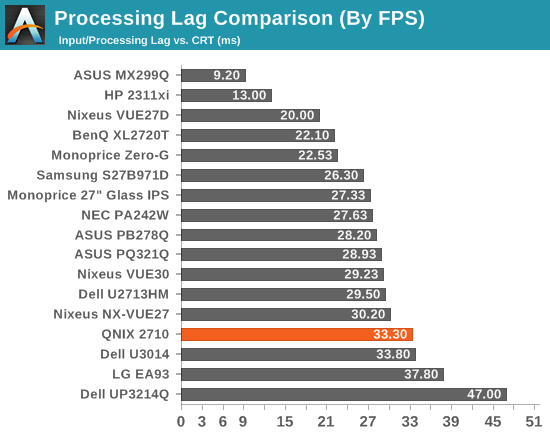
The QNIX color gamut encompasses 69.1% of the AdobeRGB gamut. This is slightly short of the sRGB gamut (which is 71% of AdobeRGB). The shortcomings are going to be in the Cyan and Blue area of the gamut as there is over-saturation in Reds and Greens. With standard white LED backlights this is expected.
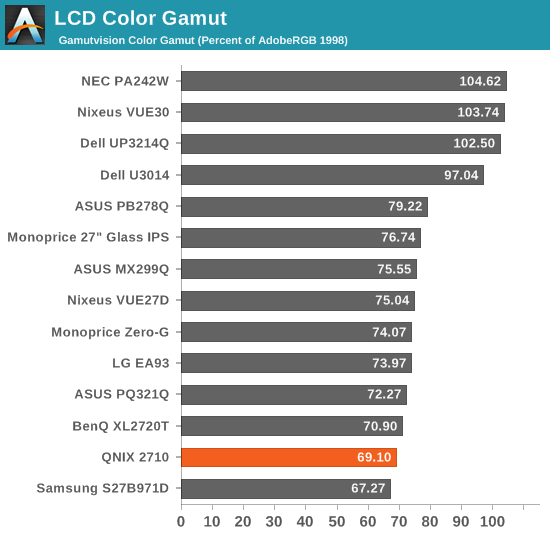
Power use is average for a 27” QHD display. The maximum light output power usage is very close to everyone else, but the minimum power usage is a bit worse. Since it is only a couple of watts difference here, it isn’t a large enough difference to even worry about. The QNIX is neither more or less efficient than other LED backlit displays on the market.
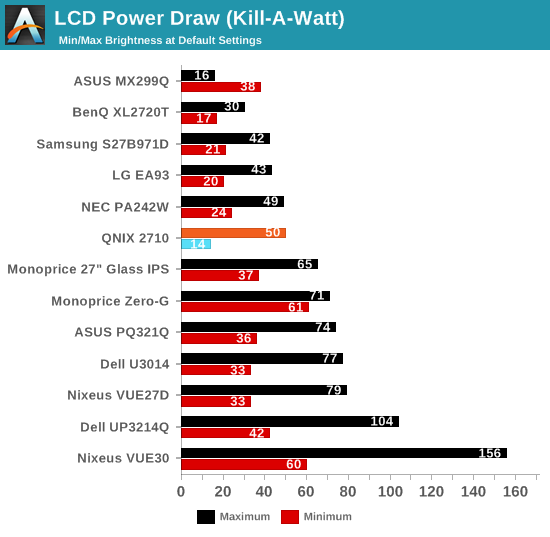
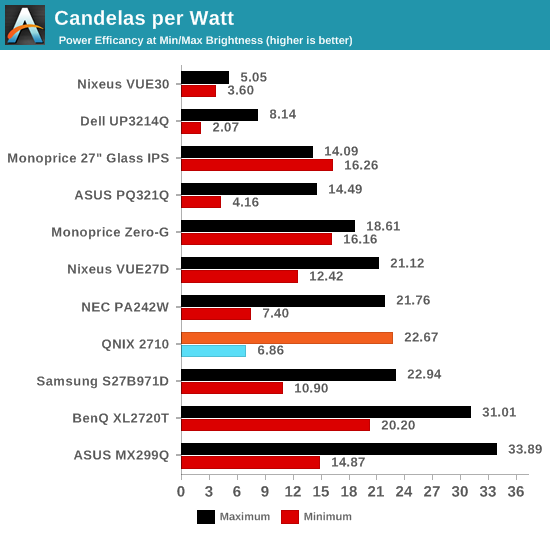


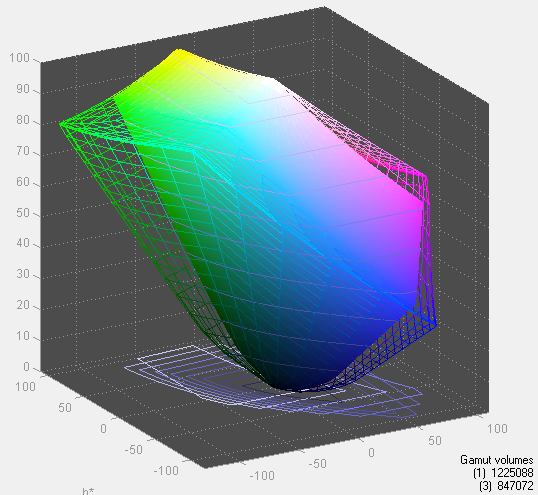








85 Comments
View All Comments
Communism - Friday, April 11, 2014 - link
The X-Star DP2710 is a Samsung PLS display.The one reviewed is an AUOptronics AHVA display.
Therein lies the difference.
tbonanno - Monday, April 14, 2014 - link
Where did you hear that? Every site I see the display port version for sale it says Samsung PLS as well.okashira - Friday, April 11, 2014 - link
Your DP2710LED is superior to the reviewed monitor:-better contrast
-better uniformity
-better colors
-overclockable
-no input lag
Folterknecht - Friday, April 11, 2014 - link
Please use metric system for measurements or at least also list them. After all anandtech deals with technical gadgets and not with flour, sugar and wood.Ubercake - Friday, April 11, 2014 - link
It's funny... Let's use the metric system to talk about a 27" (or should we say 68.58cm?) panel.mr_tawan - Friday, April 11, 2014 - link
In my case, which I live in Thailand where the standard measurements are in metric system, the screen size in general terms are in imperial. However when reporting the exact dimension of the display, the measurements are in metric. (for example Sony KDL-70W850B is 70" LCD TV, the dimension is 1,586x970x370mm).I guess this is the case in many countries as well.
There are brochures that even has the diagonal screen size in metric system written in parenthesis after the imperial one, but no one pays attention to it.
QuantumPion - Friday, April 11, 2014 - link
Also note according to the overclock.net forums, only the DVI-only panels can truly overclock refresh rate. The multi-input panels can force higher refresh rate, but they just simply drop the extra frames.cheinonen - Friday, April 11, 2014 - link
Thanks for pointing this out. I tested this today and it is the case, so I updated the review. Screenshots are included as well. I'll make sure to run that test in the future to avoid this mistake.blackoctagon - Thursday, May 1, 2014 - link
Sounds like you may want to review another (genuinely overclockable) screen, like the Overlord Tempest X270OCcoachingjoy - Friday, April 11, 2014 - link
Bought a Yamakasi 27" WQHD for ~310 USD. It's great .. except it has a dark speck just to the left of center between the panel and glass. If one concentrates on this imperfection it would drive anyone nuts. I just focus on the 310 USD and everything is fine, every once and awhile though......